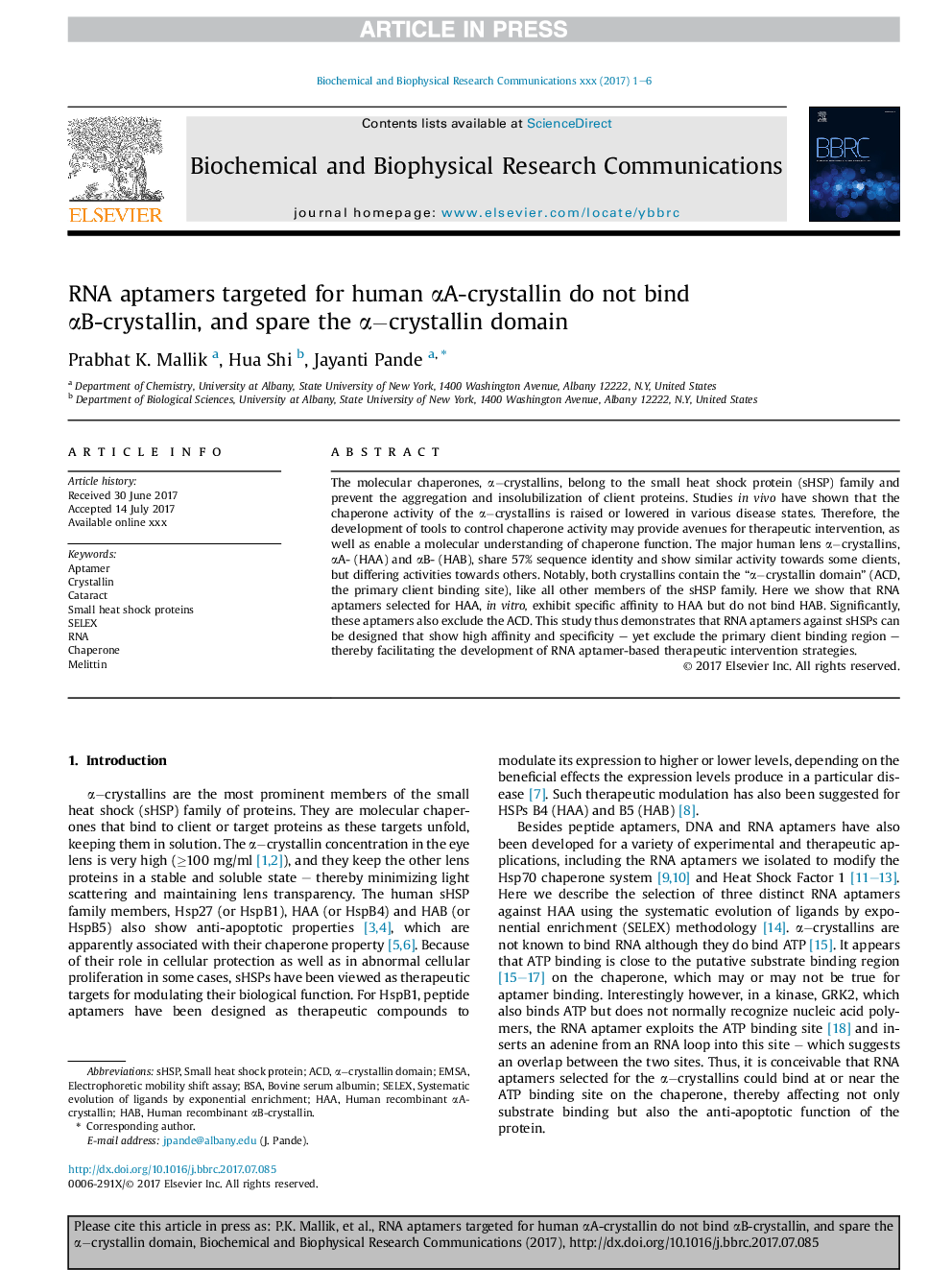| Article ID | Journal | Published Year | Pages | File Type |
|---|---|---|---|---|
| 5504995 | Biochemical and Biophysical Research Communications | 2017 | 6 Pages |
Abstract
The molecular chaperones, αâcrystallins, belong to the small heat shock protein (sHSP) family and prevent the aggregation and insolubilization of client proteins. Studies in vivo have shown that the chaperone activity of the αâcrystallins is raised or lowered in various disease states. Therefore, the development of tools to control chaperone activity may provide avenues for therapeutic intervention, as well as enable a molecular understanding of chaperone function. The major human lens αâcrystallins, αA- (HAA) and αB- (HAB), share 57% sequence identity and show similar activity towards some clients, but differing activities towards others. Notably, both crystallins contain the “αâcrystallin domain” (ACD, the primary client binding site), like all other members of the sHSP family. Here we show that RNA aptamers selected for HAA, in vitro, exhibit specific affinity to HAA but do not bind HAB. Significantly, these aptamers also exclude the ACD. This study thus demonstrates that RNA aptamers against sHSPs can be designed that show high affinity and specificity - yet exclude the primary client binding region - thereby facilitating the development of RNA aptamer-based therapeutic intervention strategies.
Keywords
Related Topics
Life Sciences
Biochemistry, Genetics and Molecular Biology
Biochemistry
Authors
Prabhat K. Mallik, Hua Shi, Jayanti Pande,
